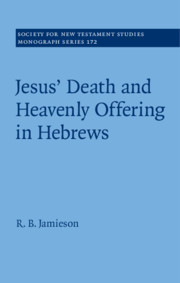Book contents
- Jesus’ Death and Heavenly Offering in Hebrews
- Society for New Testament Studies
- Jesus’ Death and Heavenly Offering in Hebrews
- Copyright page
- Contents
- Acknowledgments
- Note on Style and Sources
- 1 Introduction
- Part I The Formal Question
- Part II The Material Question
- Bibliography
- Subject Index
- Scripture Index
- Index of Other Ancient Sources
- Author Index
- References
Bibliography
Published online by Cambridge University Press: 26 November 2018
- Jesus’ Death and Heavenly Offering in Hebrews
- Society for New Testament Studies
- Jesus’ Death and Heavenly Offering in Hebrews
- Copyright page
- Contents
- Acknowledgments
- Note on Style and Sources
- 1 Introduction
- Part I The Formal Question
- Part II The Material Question
- Bibliography
- Subject Index
- Scripture Index
- Index of Other Ancient Sources
- Author Index
- References
Summary

- Type
- Chapter
- Information
- Jesus' Death and Heavenly Offering in Hebrews , pp. 194 - 211Publisher: Cambridge University PressPrint publication year: 2018

